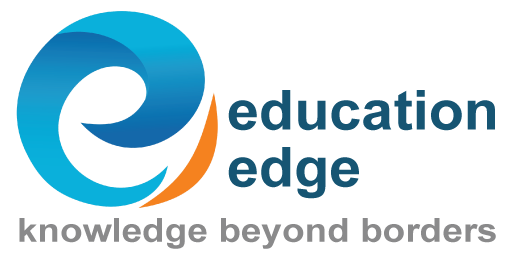CBAP Training – Chapter 4: Elicitation and Collaboration
One of the important aspects of CBAP Training is Elicitation and Collaboration. Elicitation is the core competency of a business analyst and deep knowledge of elicitation techniques is required to do well in CBAP exam.
CBAP Exam tests you on this concept and why not, needless to say – elicitation and collaboration is the core competency of any good business analyst. CBAP Training at Education Edge is designed to address this area with BABOK subject knowledge along with questions that help you understand the core concepts.
Let’s go over Elicitation and Collaboration:
My take – Elicitation and Collaboration knowledge area focusses on the best practices that a business analyst can leverage to bring forth information from stakeholder.
Critical Points:
- Do not mistake information for requirements. Requirements are one form of information. So keeping that in mind, Elicitation and Collaboration goes over and beyond capturing requirements.
- Elicitation is the drawing forth or receiving of information from stakeholders or other sources.
- Collaboration is the act of two or more people working together towards a common goal.
- This knowledge area also focuses on not only extracting or capturing information but also confirming the results of elicitation with the stakeholders to ensure consensus has been formed.
Elicitation and collaboration can be planned, unplanned, or both.
Unplanned activities happen in the moment without notice, such as last-minute or ‘just in time’ collaboration or conversations.
Very Imp: Business analysis information derived from an unplanned activity may require deeper exploration through a planned activity.
The Elicitation and Collaboration knowledge area is composed of the following tasks:
- Prepare for Elicitation
- Conduct Elicitation
- Confirm Elicitation Results
- Communicate Business Analysis Information
- Manage Stakeholder Collaboration
Ensure that we develop understanding of how BACCM maps to Elicitation and Collaboration.
Prepare for Elicitation:
The purpose of Prepare for Elicitation is to understand the scope of the elicitation activity, select appropriate techniques, and plan for (or procure) appropriate supporting materials and resources. This includes the following:
- determining which work products will be produced using the elicitation results,
- deciding which techniques are best suited to produce those results,
- establishing the elicitation logistics,
- identifying any supporting materials needed, and
- understanding circumstances to foster collaboration during an elicitation activity.
We must pay attention to the elements that are considered as a part of the activity. Understanding the scope of elicitation, techniques that will be used to elicit information along with logistics that will support the elicitation activity are core aspects that must be considered as a part of this activity. Providing supporting materials to the stakeholder well in advance of the elicitation activity so that stakeholders are prepared for the elicitation session are other important elements that must be considered.
The output of this activity is Elicitation Activity Plan.
Conduct Elicitation: The purpose of Conduct Elicitation is to draw out, explore, and identify information relevant to the change.
There are three common types of elicitation:
Collaborative: involves direct interaction with stakeholders, and relies on their experiences, expertise, and judgment.
Research: involves systematically discovering and studying information from materials or sources that are not directly known by stakeholders involved in the change. Stakeholders might still participate in the research. Research can include data analysis of historical data to identify trends or past results.
Experiments: involves identifying information that could not be known without some sort of controlled test. Experiments include observational studies, proofs of concept, and prototypes.
One or more elicitation techniques may be used to produce the desired outcome within the scope of elicitation.
Elements – Guiding and capturing elicitation outcomes is the primary focus of business analyst.
Elicitation Results are the core output of this activity. Bear in mind these are unconfirmed results that require confirmation and the next task of Confirm Elicitation Results helps achieve the confirmation of the elicitation results. No elicitation activity is complete without stakeholder confirmation.
Confirm Elicitation Results:
The purpose of Confirm Elicitation Results is to check the information gathered during an elicitation session for accuracy and consistency with other information.
Elicited information is confirmed to identify any problems and resolve them before resources are committed to using the information. This review may discover errors, omissions, conflicts, and ambiguity.
Collaboration with stakeholders might be necessary to ensure their inputs are correctly captured and that they agree with the results of non-facilitated elicitation.
If information is not correct, the business analyst determines what is correct, which can require more elicitation.
Risk – Committing resources to business analysis activities based on unconfirmed elicitation results may mean stakeholder expectations are not met. If the results are inconsistent, additional elicitation might need to be conducted to resolve the discrepancies.
The core output is Elicitation Results that are confirmed.
Communication Business Analysis Information:
The purpose of this task is to ensure that stakeholders have shared understanding of business analysis information. It is not only important to push the information but also ensure that information is understood by stakeholder. This process is an iterative and bi-directional process.
Business Analyst must act on feedback and disagreements.
Communicate appropriate information based on stakeholder needs in the tone, language and style appropriate to the audience.
Please note that the planning and behaviors that we as business analyst demonstrate early are used everywhere. For example the core input of this activity Business Analysis Information and Stakeholder Engagement Approach are leveraged from BAPM.
Critical component here are objective and format of communication. Based on stakeholder needs formal documentation, informal documentation and presentations may be used to communicate business analysis information.
The core output of this task is Business Analysis Information that has been communicated to the appropriate stakeholders based on their needs in the format they need along so that the information is understood and common understanding is developed.
Manage Stakeholder Collaboration:
The purpose here is to manage stakeholder to work towards a common goal.
Managing Stakeholder Collaboration is an ongoing activity.
The more significant the impact of the change or its visibility within the organization, the more attention is directed to managing stakeholder collaboration.
Business analysts manage stakeholder collaboration to capitalize on positive reactions, and mitigate or avoid negative reactions. The business analyst should constantly monitor and assess each stakeholder’s attitude to determine if it might affect their involvement in the business analysis activities.
Gain Agreements and Commitments, Collaboration and Monitor Stakeholder Engagement are core aspects that should be considered.







